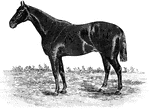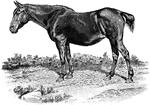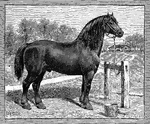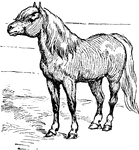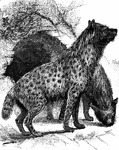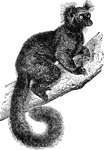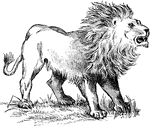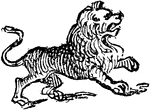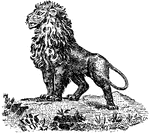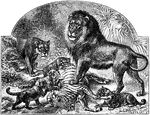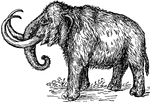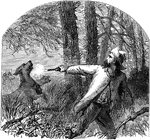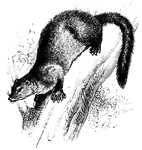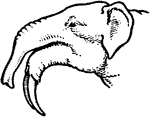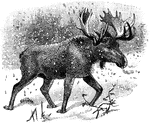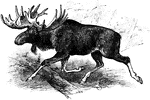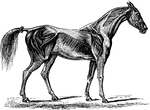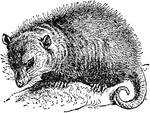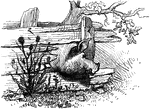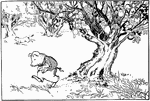
Trotting Horse
"Horse in the act of trotting. In this, as in all the other paces, the body of the horse is levered…

Egyptian Hunting Party
"The hunting scenes are very numerous among their paintings, and the devices for capturing birds and…
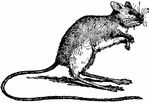
Jumping Mouse
The Jumping Mouse (Zapus hudsonius) is a N. American, jerboa-like mouse, with long hind legs, a very…

Common Kusimanse
The Common Kusimanse (Crossarchus obscurus), also known as the Long-nosed Kusimanse, is a small, diurnal…

Lemming
Lemmings are small rodents, usually found in or near the Arctic, in tundra biomes. Together with the…

Lemming
A lemming is a small, yellowish-brown rodent, closely related to the vole, and belonging to the genus…
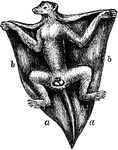
Flying Lemur
A gliding mammal that uses the flaps of extra skin between their legs to glide from higher to lower…
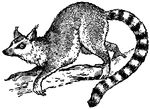
Ring-tailed Lemur
A familiar example of the true lemur, the Ring-Tailed Lemur (Lemur catta) , or 'Madagascar cat', is…
Lion Being Hit by Palm Tree & Photographer Riding Away on a Horse
An illustration of a lion being hit by a palm tree and a photographer riding away on a horse.
Photographer Shooting Lion in Robe
An illustration of a photographer shooting a lion dressed in a robe leaning against a rock.
Lion Wearing Robe Chasing Photographer
An illustration of a lion wearing a robe and chasing a photographer.
Lion Wearing Robe Chasing Photographer
An illustration of a lion wearing a robe and chasing a photographer who created a sling shot out of…
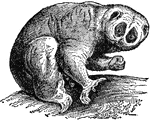
Loris
"Loris is a genus of Lemuridæ, with rounded heads and pointed snouts, slender bodies, very large…
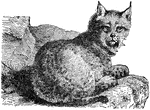
Lynx
A lynx is any of four medium-sized wild cats. All are members of the genus Lynx, but there is considerable…

Manatee on Shore
Manatees are large, fully aquatic marine mammals sometimes known as sea cows. The name manatí…
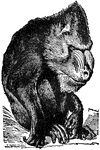
Mandrill
"The Mandrill is an African baboon. It was well known to the ancients. A full grown male measures about…

American Marten
The American marten (Martes americana) is a North American member of the Mustelidae family, sometimes…

Megatherium
"Megatherium is a genus of extinct edentates, founded on a nearly complete skeleton discovered on the…

Mole
Moles are the majority of the members of the mammal family Talpidae in the order Soricomorpha. Although…

Cape Mole Rat
The Cape Mole Rat (Georychus capensis) is a rodent in the Bathyergidae family of blesmols and was also…
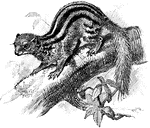
Broad-Striped Malagasy Mongoose
The Broad-Striped Malagasy Mongoose (Galidictis fasciata) is a small mammal in the Eupleridae family…
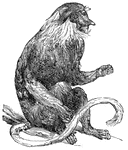
Proboscis Monkey
A native of Borneo. The proboscis monkey is so called because of its large nose. Males generally have…
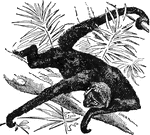
Spider Monkey
"Spider Monkey is a general name applied to many species of platyrhine or New World monkeys, distinguished…

Ocelot
"A digitigrade carnivorous mammal of the cat kind, peculiar to the American continent. It attains a…
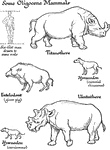
Mammals from the Oligocene Mammals
Mammals from the Oligocene age. Shown are the Titanothere, Entelodont, Hyracodon, Uintathere, and the…
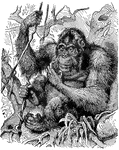
Orang Outang
"The Orang Outang is the Mias of the Dyaks; also known as the 'wild man of the wood.' It is a dull,…
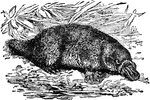
Ornithorhynchus
"Ornithorhynchus, commonly called duckbill or watermole, is a small quadruped found in Australia and…
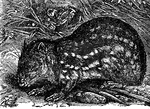
Paca
"The Paca is a small South American rodent, allied to the guinea pig. It lives singly or in pairs, passing…

Long-Tailed Pangolin
The long-tailed pangolin (Manis tetradactyla) are known as scaly anteaters because of the large keratin…
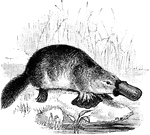
Platypus
The Platypus (Ornithorhynchus anatinus) is a semi-aquatic mammal endemic to eastern Australia, including…
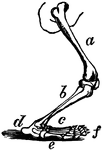
Polar Bear Leg
The polar bear, Plantigrada, is part of the subdivision Carnivora, which includes other carnivorous…
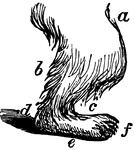
Polar Bear Leg
The anatomy of a polar bear's leg. a, femur (thigh); b, tibia (leg); c, tarsus and metatarsus (foot);…
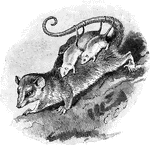
Possum
A possum (plural form: possums) is any of about 69 small to medium-sized arboreal marsupial species…
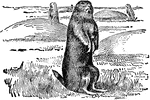
Prairie Dog
"The Prairie Dog is not even related to the dog, but is so called from the fancied resemblance of its…
